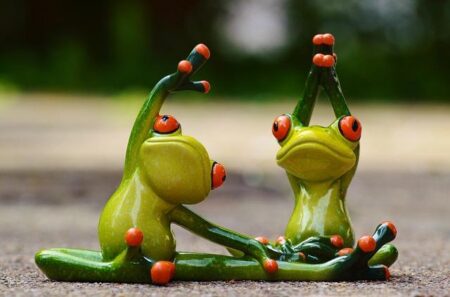A strong coach-athlete relationship is widely recognized as a key component in athletic success, but when it comes to athletes with disabilities, unique challenges and dynamics come into play. A recent systematic review published in Frontiers sheds new light on the various factors influencing this vital connection, examining how communication, trust, accessibility, and personalized coaching approaches shape the experiences of disabled athletes. As adaptive sports continue to gain prominence worldwide, understanding these elements is crucial for fostering inclusive environments where all athletes can thrive. This article delves into the findings of the review, highlighting the critical insights that could transform coaching practices and support systems in disability sports.
Understanding Communication Barriers and Effective Strategies in Coach Athlete Interactions
Effective coach-athlete interactions are often hindered by several communication barriers, particularly when working with athletes with disabilities. Physical limitations, sensory impairments, and cognitive differences can complicate the transmission and reception of information, leading to misunderstandings or reduced motivation. Additionally, environmental factors such as noisy training venues or inaccessible facilities can interfere with clear communication. Cultural perceptions and preconceived notions about disability also play a significant role, influencing how coaches and athletes perceive and engage with each other. Overcoming these challenges requires a deliberate approach focused on trust, patience, and adaptability.
Successful strategies emphasize personalized communication tailored to the athlete’s unique needs. Visual aids, sign language, and technology-assisted tools such as speech-to-text apps have been identified as practical solutions. Beyond tools, fostering an atmosphere of openness and regular feedback promotes mutual understanding. Coaches who invest time in learning about their athletes’ specific conditions and preferred communication styles report stronger connections and enhanced performance outcomes. Below is a summary of key barriers and effective strategies identified in recent studies:
| Barriers | Effective Strategies |
|---|---|
| Physical & Sensory Limitations | Use of assistive devices, tailored verbal instructions |
| Environmental Distractions | Controlled training environments, minimizing noise |
| Cultural Misconceptions | Education programs, awareness workshops |
| Cognitive Differences | Clear, concise messaging, repetition |
| Lack of Feedback | Regular check-ins and two-way communication |
- Prioritize individual communication preferences
- Incorporate technology to bridge gaps
- Build rapport through empathy and patience
Building Trust and Empathy to Enhance Performance and Motivation
Establishing a foundation of trust between coaches and athletes with disabilities is paramount for unlocking peak performance and sustained motivation. Trust cultivates a safe environment, enabling athletes to openly communicate challenges and aspirations without fear of judgment. This openness strengthens the coach-athlete bond, allowing for tailored training programs that consider physical limitations and psychological needs. Empathy, on the other hand, bridges the emotional gap, enabling coaches to genuinely understand and respond to the unique experiences of each athlete. When empathy drives coaching practices, athletes feel valued beyond their disabilities, fostering resilience and a profound intrinsic motivation to excel.
Several key factors contribute to building this vital trust and empathy:
- Active listening to athlete concerns and feedback.
- Consistent positive reinforcement tailored to individual progress.
- Cultural competence and respect for diverse backgrounds and needs.
- Transparent communication regarding goals, expectations, and setbacks.
Emphasizing these elements creates a dynamic where motivation stems not only from ambition but also from genuine connection and understanding. Below is a breakdown illustrating how trust and empathy impact athletic outcomes in a typical coaching scenario:
| Aspect | Without Trust & Empathy | With Trust & Empathy |
|---|---|---|
| Communication | Limited, surface-level | Open, honest, frequent |
| Motivation | Externally driven | Intrinsic and sustained |
| Performance | Erratic, inconsistent | Consistent, progressive |
| Emotional Support | Minimal, task-oriented | Personalized, holistic |
The Role of Adaptive Training Methods in Fostering Inclusive Athletic Development
Adaptive training methods have transformed the landscape of athletic development by prioritizing individualized approaches that accommodate diverse abilities. Coaches working with athletes with disabilities increasingly rely on these strategies to create environments where all participants can thrive. Through tailored modifications-ranging from equipment adjustments to personalized skill drills-adaptive training dismantles barriers, allowing athletes to focus on their strengths and improve performance. Key components of this approach include:
- Utilization of assistive technologies to enhance participation and feedback
- Flexible training schedules that consider fatigue and health management
- Collaborative goal-setting involving both coach and athlete perspectives
Beyond the physical adjustments, adaptive methods foster stronger coach-athlete relationships by encouraging open communication and mutual trust. When coaches demonstrate sensitivity to specific needs and show willingness to innovate, athletes report higher motivation and adherence to training programs. This dynamic not only boosts individual performance but also catalyzes inclusive team cultures, promoting equity within competitive and recreational settings alike. The following table illustrates common adaptive methods and their impacts on athlete engagement:
| Adaptive Method | Primary Benefit | Impact on Athlete Experience |
|---|---|---|
| Modified Equipment | Enhanced Accessibility | Increased confidence and skill acquisition |
| Progressive Skill Scaling | Reduced Frustration | Improved motivation and persistence |
| Technology-Assisted Feedback | Immediate Performance Insights | Heightened self-awareness and correction |
Recommendations for Coaches to Strengthen Support and Empower Athletes with Disabilities
To foster a truly inclusive and empowering environment, coaches must prioritize effective communication tailored to individual athlete needs. This involves actively listening to athletes’ feedback, recognizing their unique challenges, and co-creating training plans that resonate with their abilities and aspirations. Cultivating patience and empathy enhances trust, allowing athletes with disabilities to feel valued and understood, which is critical for motivation and sustained engagement in sport.
- Personalize coaching methods: Adapt techniques based on physical, sensory, or cognitive considerations.
- Encourage autonomy: Involve athletes in goal-setting and decision-making processes.
- Continuous education: Stay updated with disability-specific training approaches and assistive technologies.
- Build community connections: Facilitate peer support and inclusive team dynamics.
Furthermore, institutional support plays a pivotal role in equipping coaches with the resources necessary to champion athletes with disabilities effectively. Structured mentorship programs and access to disability-focused workshops can bridge knowledge gaps and dismantle preconceived biases. By championing an environment where both successes and setbacks are openly discussed, coaches empower athletes to develop resilience and confidence on and off the field.
| Recommendation | Impact | Implementation Tip |
|---|---|---|
| Regular Disability Awareness Training | Enhances empathy and understanding | Schedule quarterly workshops with experts |
| Inclusive Performance Metrics | Measures progress fairly across abilities | Customize benchmarks per athlete profile |
| Peer Mentorship Initiatives | Strengthens social support networks | Pair novice athletes with experienced peers |
Closing Remarks
In conclusion, this systematic review sheds vital light on the complex factors shaping the relationship between coaches and athletes with disabilities. By unpacking elements such as communication styles, mutual trust, and adaptive coaching strategies, the study highlights the importance of tailored approaches that foster empowerment and performance. As the sports community continues to prioritize inclusivity, these insights offer a crucial roadmap for coaches, organizations, and policymakers striving to enhance engagement and success for athletes with disabilities.





